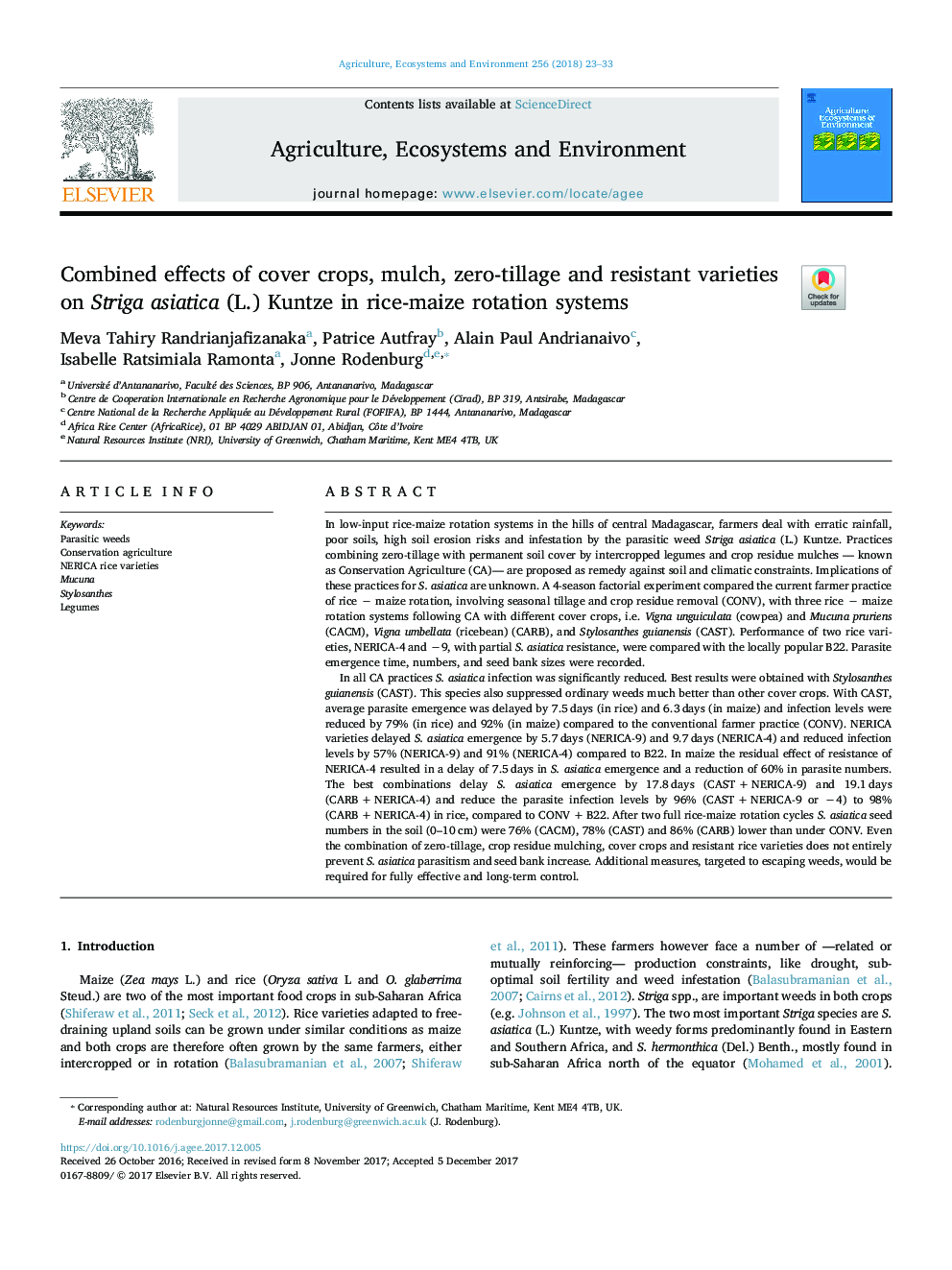| Article ID | Journal | Published Year | Pages | File Type |
|---|---|---|---|---|
| 8487156 | Agriculture, Ecosystems & Environment | 2018 | 11 Pages |
Abstract
In all CA practices S. asiatica infection was significantly reduced. Best results were obtained with Stylosanthes guianensis (CAST). This species also suppressed ordinary weeds much better than other cover crops. With CAST, average parasite emergence was delayed by 7.5â¯days (in rice) and 6.3â¯days (in maize) and infection levels were reduced by 79% (in rice) and 92% (in maize) compared to the conventional farmer practice (CONV). NERICA varieties delayed S. asiatica emergence by 5.7â¯days (NERICA-9) and 9.7â¯days (NERICA-4) and reduced infection levels by 57% (NERICA-9) and 91% (NERICA-4) compared to B22. In maize the residual effect of resistance of NERICA-4 resulted in a delay of 7.5â¯days in S. asiatica emergence and a reduction of 60% in parasite numbers. The best combinations delay S. asiatica emergence by 17.8â¯days (CASTâ¯+â¯NERICA-9) and 19.1â¯days (CARBâ¯+â¯NERICA-4) and reduce the parasite infection levels by 96% (CASTâ¯+â¯NERICA-9 or â4) to 98% (CARBâ¯+â¯NERICA-4) in rice, compared to CONVâ¯+â¯B22. After two full rice-maize rotation cycles S. asiatica seed numbers in the soil (0-10â¯cm) were 76% (CACM), 78% (CAST) and 86% (CARB) lower than under CONV. Even the combination of zero-tillage, crop residue mulching, cover crops and resistant rice varieties does not entirely prevent S. asiatica parasitism and seed bank increase. Additional measures, targeted to escaping weeds, would be required for fully effective and long-term control.
Related Topics
Life Sciences
Agricultural and Biological Sciences
Agronomy and Crop Science
Authors
Meva Tahiry Randrianjafizanaka, Patrice Autfray, Alain Paul Andrianaivo, Isabelle Ratsimiala Ramonta, Jonne Rodenburg,
